Audio Classification using Machine Learning
Jon Nordby jonnord@nmbu.no
November 15, 2018
Introduction
Goal
a machine learning practitioner
without prior knowledge about sound processing
can solve basic Audio Classification problems
Assumed knowledge
Machine learning basics
- Supervised vs unsupervised learning
- Common methods
Basic signal processing
- Sampling
- Frequency vs time-domain
- Fourier Transform
- Filter kernels, Convolutions
Study material
Computational Analysis of Sound Scenes and Events. Virtanen,Plumbley,Ellis (2018)
Human and Machine Hearing - Extracting Meaning from Sound, Second Edition. Richard F. Lyon (2018)
DCASE2018 Bird Audio Detection challenge
50+ papers on Acoustic Event Detection etc.
Machine Hearing
Examples
Various usecases and tasks that Machine Hearing can be applied to.
Speech Recognition
What is this person saying?
Musical key classification
What key is this music in?
Audio Scene
What kind of place is this from?
Medical diagnostics
Is this a healthy heart?
Industrial monitoring
Is this machine operating normally?
Ecoacoustics
What kind of animal is this?
Established subfields
- Speech Recognition
- Music Information Retrieval
- Sound Scenes and Events
Brief primer on sound
Audio Mixtures
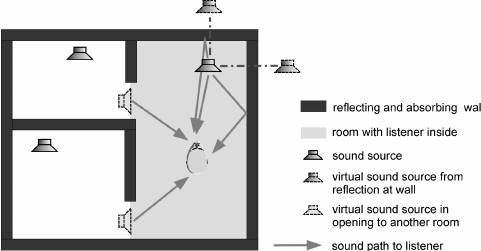
Human hearing
Two ears (Binaural). Frequencies approx 20Hz - 20kHz.
A non-linear system
- Loudness is not linear with sound pressure
- Loudness is frequency dependent
- Compression. Sensitivity lowered when loud
- Masking. Close sounds can hide eachother
Digital sound pipeline
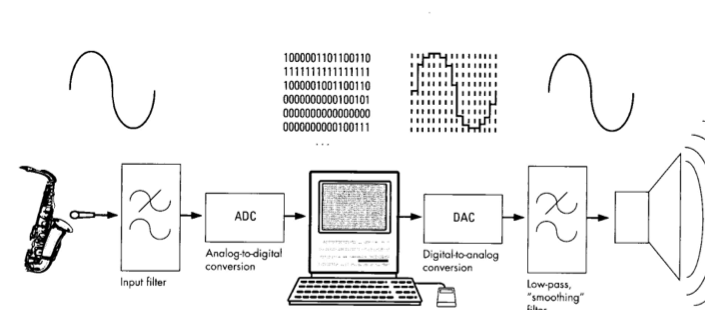
Digital sound representation
- Quantized in time (ex: 44100 Hz)
- Quantizied in amplitude (ex: 16 bit)
- N channels. Mono/Stereo
- Uncompressed formats: PCM .WAV
- Lossless compression: .FLAC
- Lossy compression: .MP3
Time domain
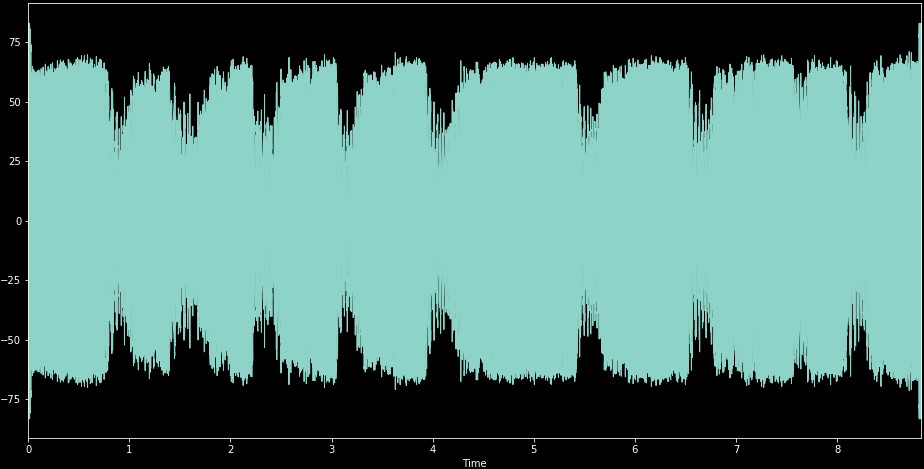
Normally logarithmic scale
Frequency domain
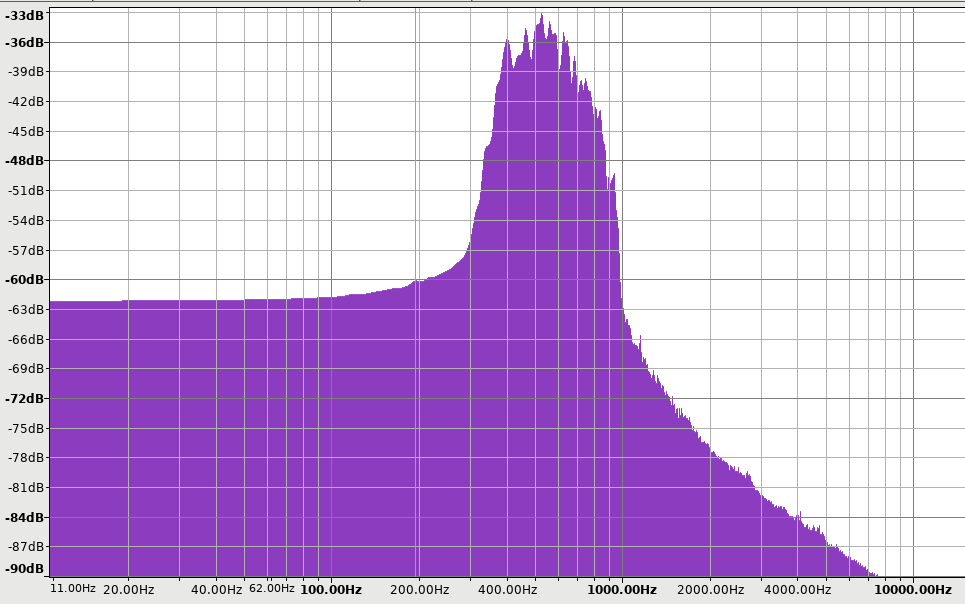
Fourier Transform.
Time-frequency domain
Short-Time-Fourier-Transform (STFT)
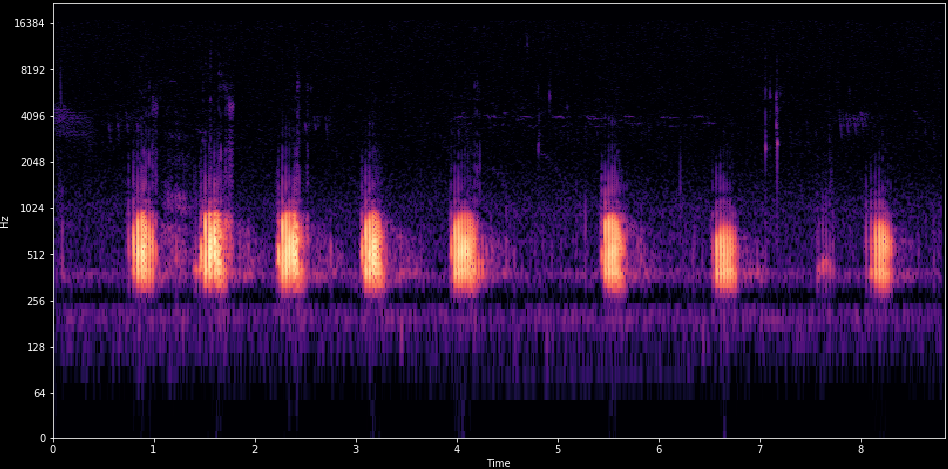
Spectrogram
A practical example: Bird Detection
DCASE2018 challenge
- 10 second audio clips
- Has bird? yes/no => binary classification
- One label for entire clip => weakly annotated
- 3 training sets, 3 test sets. 45’000 samples
Mismatched conditions: 2 testsets with no training samples.
Bird sounds
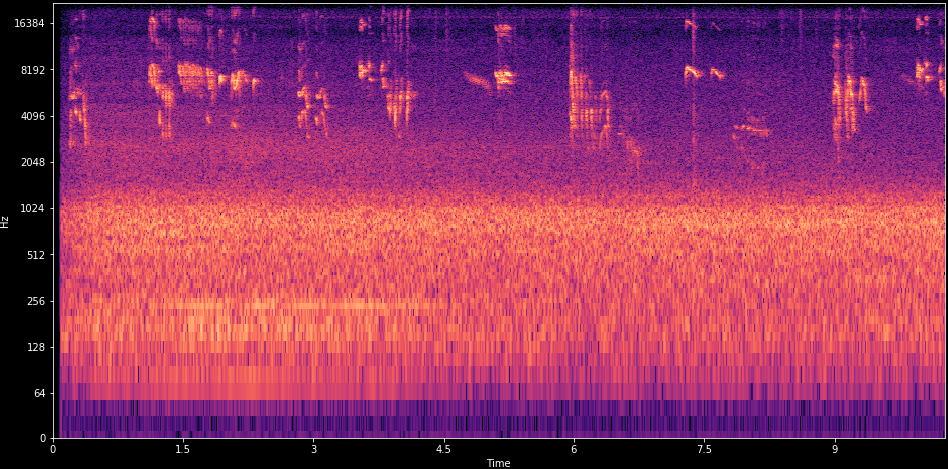
More realistic
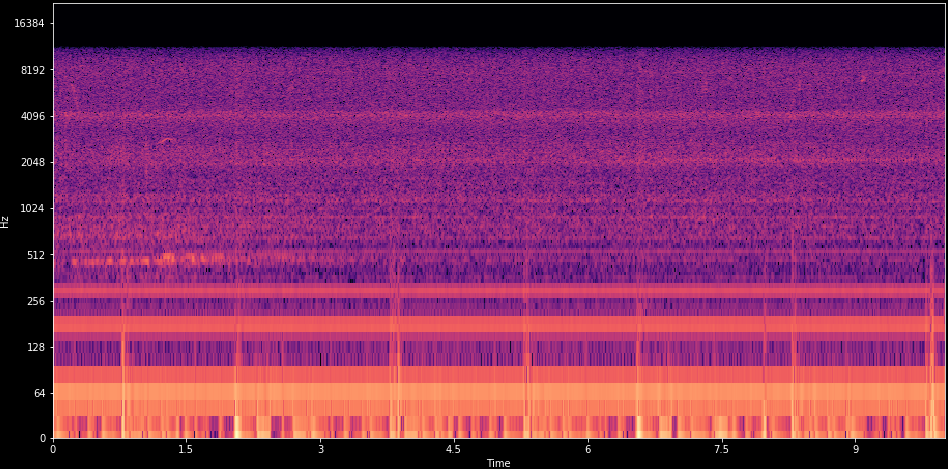
Feature extraction
Audio classification pipeline

Frames
Cut audio into short overlapping segments
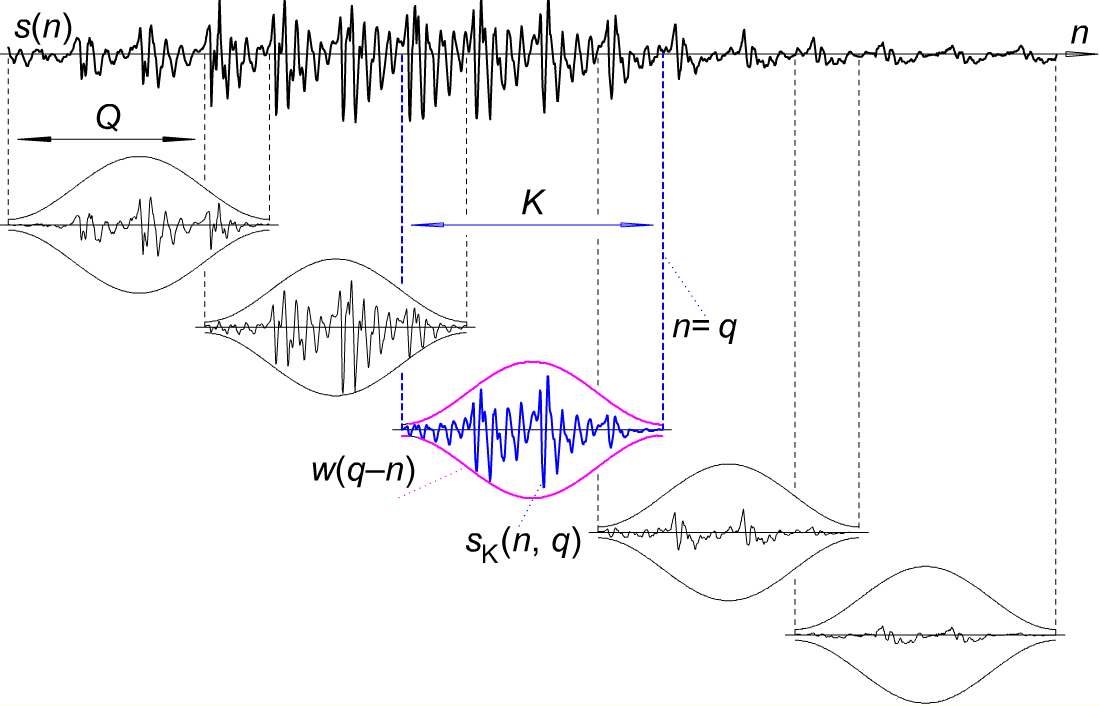
Low-level features
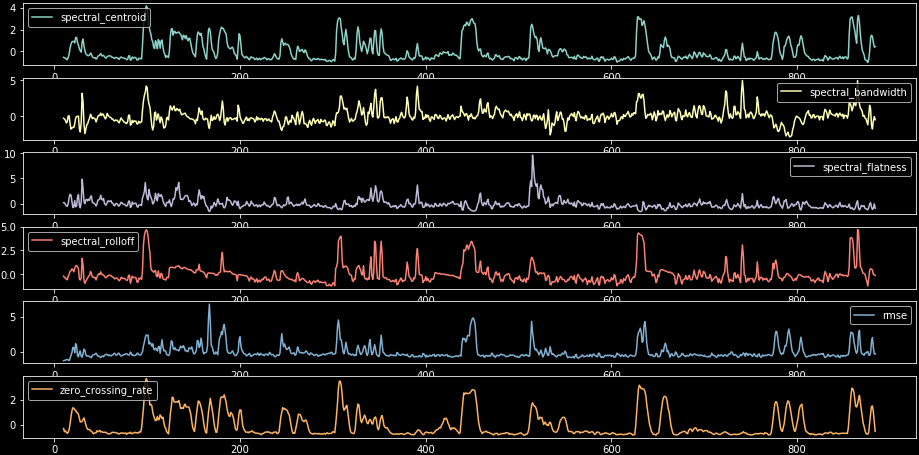
Basic statistics on spectrogram
Clip summarization

min,max,skew,Kurtosis,…
Delta frames
Delta frames: Difference between successive frames
Delta-delta frames: Difference between delta frames
Summarized independently.
Texture windows

mel-scale filters
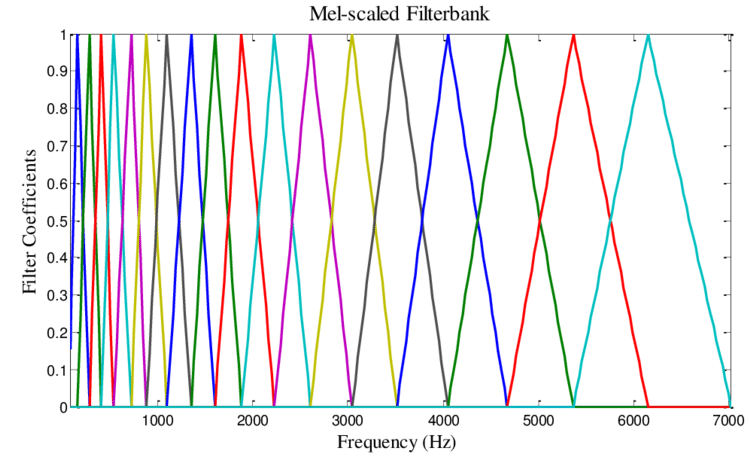
Reduces number of bands in spectrogram. Perceptually motivated.
mel-spectrogram
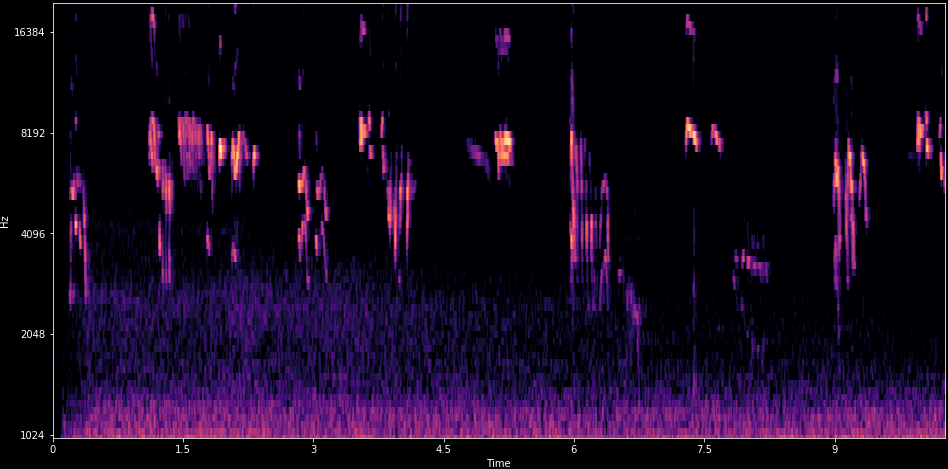
Spectrogram filtered by mel-scale triangular filters
What about noise?
There are birds in here!

Filtered mel-spectrogram
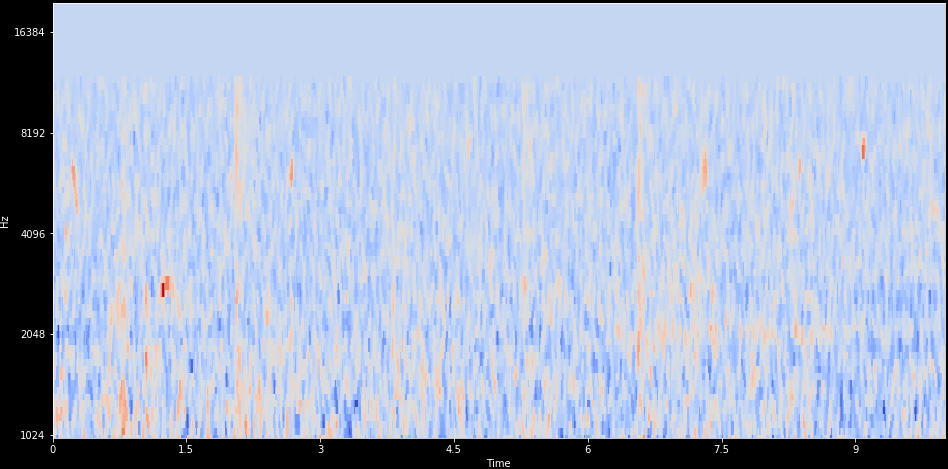
Subtracted filterbank means, added Median filter (3x3)
Mel-filter Cepstrum Coefficients (MFCC)
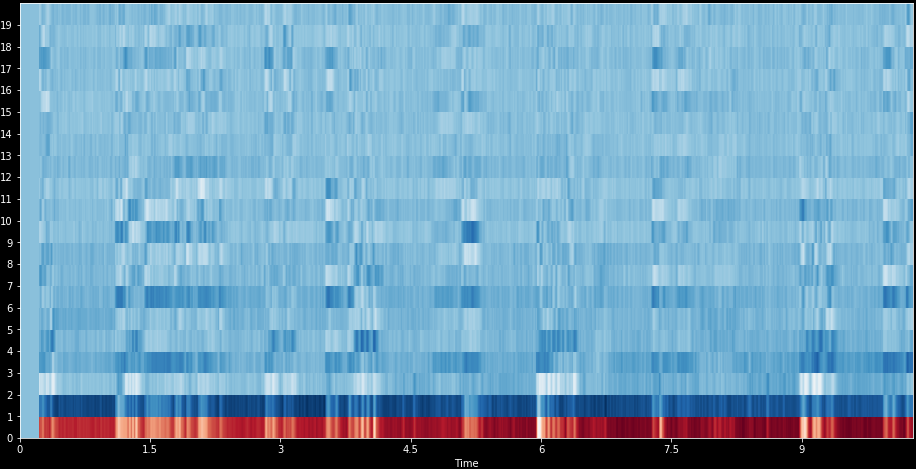
Discrete Cosine Transform (DCT-2) of mel-spectrogram
Convolution
Local feature detector

Dictionary of kernels

Feature learning
Unsupervised, from random spectrogram patches
- Clustering. Spherical k-means
- Matrix Factorization. Sparse Non-negative MF
Transfer: Copy from existing models
Advanced feature representations
Examples
- Wavelet filterbanks
- Scattering Transform
- CARFAC. Perceptual cochlear model
Not so much used
Classifiers
Classic models
The usual suspects
- Logistic Regression
- Support Vector Machine
- Random Forests
Also popular in Audio Classification
- Gaussian Mixture Models (GMM)
- Hidden Markov Model (HMM)
Deep learning
- Convolutional Neural Network (CNN) + dense layers
- Fully Convolutional Neural Network (FCNN)
- Recurrent Convolutional Neural Networks (RCNN)
Comparison of different approaches
Workbook
https://github.com/jonnor/birddetect
Important files:
- Model.ipynb
- dcase2018bad.py
- features.py
Classifier
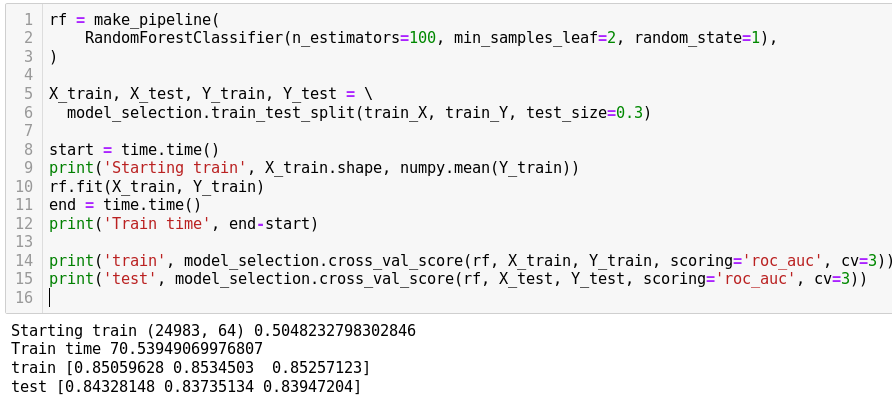
Feature extraction
def melspec_maxp(data, sr):
params = dict(n_mels=64, fmin=500, n_fft=2048, fmax=15000, htk=True)
mel = librosa.feature.melspectrogram(y=data, sr=sr, **params)
mel = meansubtract(mel)
mel = minmaxscale(mel)
# mel = medianfilter(mel, (3,3))
features = numpy.concatenate([
numpy.max(mel, axis=1),
])
return featuresDask parallel processing
chunk_shape = (chunk_size, feature_length)
def extract_chunk(urls):
r = numpy.zeros(shape=chunk_shape)
for i, url in enumerate(urls):
r[i,:] = feature_extractor(url)
return r
extract = dask.delayed(extract_chunk)
def setup_extraction(urls):
values = extract(urls)
arr = dask.array.from_delayed(values,
dtype=numpy.float,
shape=chunk_shape)
return arr
arrays = [ setup_extraction(c) for c in chunk_sequence(wavfiles, chunk_size) ]
features = dask.array.concatenate(arrays, axis=0)
return featuresFeature processing time
41’000 audio files… 0.2 seconds each
Laptop: 2 hours
5 dual-core workers: 10 minutes
Cost for 10 hours compute: <50 NOK
https://docs.dask.org/en/latest/setup/kubernetes.html
Results
| Name | Features | Classifier | AUC ROC |
|---|---|---|---|
| Lasseck | melspectrogram | CNN | 89% |
| ….. | melspectrogram | CNN | 78%-84% |
| skfl | melspec-conv-skmeans | RandomForest | 73.4 % |
| jonnor | melspec-max | RandomForest | 70%[1] |
| smacpy | MFCC-meanstd | GMM | 51.7 % |
http://dcase.community/challenge2018/task-bird-audio-detection-results
1. Public leaderboard score, not submitted for challengeBest models also
Data Augmentation
- Random pitch shifting
- Time-shifting
- Time reversal
- Noise additions
Tricks
- Ensemble. Model averaging
- Self-adaptation. Pseudo-labelling
Summary
Feature representation
Try first mel-spectrogram (log or linear).
MFCC only as fallback
Machine Learning method
Try Convolutional Neural Networks (or RCNN) first.
Alternative: Learned convolutional kernels + RandomForest
Probably avoid: MFCC + GMM/HMM
Tricks
Subtract mel-spectrogram mean.
Consider median filtering.
Use data augmentation.
Try Transfer Learning. Can be from image model!
Questions?
Bonus
End2End learning
Using the raw audio input as features with Deep Neural Networks.
Need to learn also the time-frequency decomposition, normally performed by the spectrogram.
Actively researched using advanced models and large datasets.
Remaining work
- Implement kernel learning (spherical k-means)
- Implement a Convolutional Neural Network
- Compare the different models, summarize
- Finish writing report
DCASE2018 workshop
Reports from challenge tasks:
- Acoustic scene classification
- General-purpose audio taggging
- Bird Audio Detection
- semi-supervised: Domestic sound event detection
- multi-channel acoustics: Domestic activities
I am going! November 19-21, London.
Continious Monitoring
Today: Audio collected and classified periodically
Future: Contious process using Internet-of-Things sensors
Writing a report in TIP360:
Designing a Wireless Acoustic Sensor Network for machine learning
Problem formulations
Classification
Return: class of this audio sample
- Bird? yes/no (binary)
- Which species is this? (multi-class)
Event detection
Return: time something occurred.
- “Bird singing started”, “Bird singing stopped”
- Classification-as-detection. Classifier on short time-frames
- Monophonic: Returns most prominent event
Polyphonic events
Return: times of all events happening
Examples
- Bird singing, Human talking, Music playing
- Bird A, Bird B singing.
Approaches
- separate classifiers per ‘track’
- joint model: multi-label classifier
Audio segmentation
Return: sections of audio containing desired class
- Ex: based on Event Detection time-stamps
- Pre-processing to specialized classifiers
Source separation
Return: audio with only the desired source
- Masking in time-frequency domain
- Binary masks or continious
- Blind-source or Model-based
Other problem formulations
- Tagging
- Audio fingerprinting.
- Searching: Audio Information Retrieval
Misc
Desirable traits
What is needed for good audio classification?
- Volume independent
- Robust to mixtures of other sounds
- Handles intra-class variations. Different birdsong
- Can exploit frequency patterns
- Can exploit temporal patterns